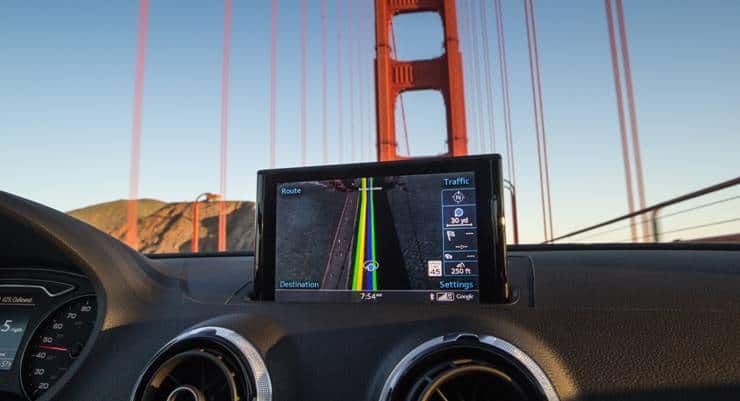Audi of America announced recently that all Audi 2016 models in the US which are equipped with Audi connect, its Connected Car platform, will now come with AT&T 4G LTE SIM which will enable drivers to subscribe to AT&T's mobile data plans for their cars. With more auto-makers introducing their Connected Car platforms, mobile operators are seeing increasingly attractive proposition for their connectivity services, in tandem with the growth in the Internet-of-Things (IoT) and are inking partnerships with both auto brands as well as content providers to offer an expanded suite of digital services for their subscribers.
Both Audi and AT&T launched the brand's first LTE-in-the-car service by introducing two connected car packages for the 2015 A3 sedan, which debuted in March last year, where subscribers had the choice of signing up on a 5Gb 6-month plan for US$99 or a 30 Gb 30-month plan for US$499. According to Audi, these plans were tailored based on the typical mobile data usage patterns in the car and users would receive email alerts as they approach their usage threshold. Both plans allow drivers to access various services offered on the Audi connect platform, namely navigation, streaming and high-speed access to Internet including up-to-the-minute traffic information, semi-dynamic route guidance, over the air map updates, and internet radio, in addition to picture navigation, social media, personalized RSS news feeds with read-aloud functionality, and more, said both companies. The 4G LTE connection also allows the vehicle to act as a Wi-Fi Hotspot, delivering Internet connection to up to 8 devices simultaneously.
 Apart from the two plans, AT&T's LTE connection in Audi is also offered under its shared plan packages for its existing customers, enabling them to add their cars to their shared plans just as how they would add their tablets or other connected devices (access fee of US$10). Overall, the Audi-AT&T tie-up will allow Audi buyers to have access to 4G LTE connectivity and is expected to continue onboarding more people to having Internet access in their cars. Although wireless connectivity in the car, specifically across luxury brands, is not something new and has been around for telematics (vehicle diagnostics and navigation) as well as for concierge services and emergency purposes, the new 4G LTE service accords the driver the choice of turning on or turning off the connectivity and the choice of selecting the kind of content that he/she wishes to access in the car. The earlier method, which is referred to as 'embedded', though is still the most used connectivity in today's Connected Cars with a share of 40% in the market as of 2013, is expected to be taken over by the 'integrated' method (driver's infotainment services and telematics integrated onto a single platform) with an estimated market share of 45% by 2016, driven primarily by the rise in the demand for in-vehicle infotainment services and the separate billing capabilities for sponsored data usage (for example, telematics data sent to the auto-maker) and driver consumed data as opposed to bundling of all these services as a complementary service, often the case under the embedded method. (read more: To Embed, to Tether or to Integrate - the Dilemma of the $141 Billion Connected Car Market)
Apart from the two plans, AT&T's LTE connection in Audi is also offered under its shared plan packages for its existing customers, enabling them to add their cars to their shared plans just as how they would add their tablets or other connected devices (access fee of US$10). Overall, the Audi-AT&T tie-up will allow Audi buyers to have access to 4G LTE connectivity and is expected to continue onboarding more people to having Internet access in their cars. Although wireless connectivity in the car, specifically across luxury brands, is not something new and has been around for telematics (vehicle diagnostics and navigation) as well as for concierge services and emergency purposes, the new 4G LTE service accords the driver the choice of turning on or turning off the connectivity and the choice of selecting the kind of content that he/she wishes to access in the car. The earlier method, which is referred to as 'embedded', though is still the most used connectivity in today's Connected Cars with a share of 40% in the market as of 2013, is expected to be taken over by the 'integrated' method (driver's infotainment services and telematics integrated onto a single platform) with an estimated market share of 45% by 2016, driven primarily by the rise in the demand for in-vehicle infotainment services and the separate billing capabilities for sponsored data usage (for example, telematics data sent to the auto-maker) and driver consumed data as opposed to bundling of all these services as a complementary service, often the case under the embedded method. (read more: To Embed, to Tether or to Integrate - the Dilemma of the $141 Billion Connected Car Market)
 For large brands such as Audi, their Connected Car service offering does not stop here. The company, last year, announced that selected models will also allow tethering with mobile devices, which allows popular mobile operating systems to work with the in-vehicle head unit to project the content of the mobile device onto the digital screen in the car. Toward this end, Audi's MMI® infotainment system will integrate to both Android and Apple iOS via Android Auto and CarPlay, allowing mobile users to leverage their smart devices to power their cars' internet connection and to have continuous access to their devices while driving, using native controls that are convenient and safe to use.
For large brands such as Audi, their Connected Car service offering does not stop here. The company, last year, announced that selected models will also allow tethering with mobile devices, which allows popular mobile operating systems to work with the in-vehicle head unit to project the content of the mobile device onto the digital screen in the car. Toward this end, Audi's MMI® infotainment system will integrate to both Android and Apple iOS via Android Auto and CarPlay, allowing mobile users to leverage their smart devices to power their cars' internet connection and to have continuous access to their devices while driving, using native controls that are convenient and safe to use.
Already, the Connected Car market is growing to become one of the biggest segment within the IoT, expected to make up 5.1% of the total number of connections in the IoT space, which is estimated to reach 25 billion objects by 2020, as per a recent report by Gartner, a leading research and advisory firm. Gartner expects that by 2020, one in every 5 vehicles will have some form of wireless network connection and companies such as Audi are accelerating this by adopting a multi-prong approach that allows users to leverage their existing mobile data packages as well as their devices, in addition to taking out a fresh connectivity package, to bring internet into their cars. As for mobile operators, regardless of how the car is connected - embedded, integrated or tethered - it all points to an increasing demand for their high-speed connectivity services.
More interestingly, with the mushrooming of the Connected Car content and apps market, with big names such as Parkopedia, Yelp, Slacker Radio, Stitcher and Inrix already becoming household names, the Mobile Operators' Connected Car market we are seeing today will soon extend beyond the connectivity service into content services, in parallel with Mobile Operators' foray into a wide range of digital services such as Mobile TV, audio streaming and multi-screen services. Mobile Operators' capabilities in delivering cloud-based content services which are optimized for multi-screen access and the ability to offer shared content packages (including mobile apps) will provide them with a competitive edge that will rival that of existing Connected Car content aggregators and will see the formation of new revenue opportunities within the Operators' Connected Car portfolios in near future. (Read more on Mobile Operators' opportunities in the Connected Car market - Beyond Connectivity: Expanding Operators' Content Business to Half a Billion Connected Cars by 2020 )




















